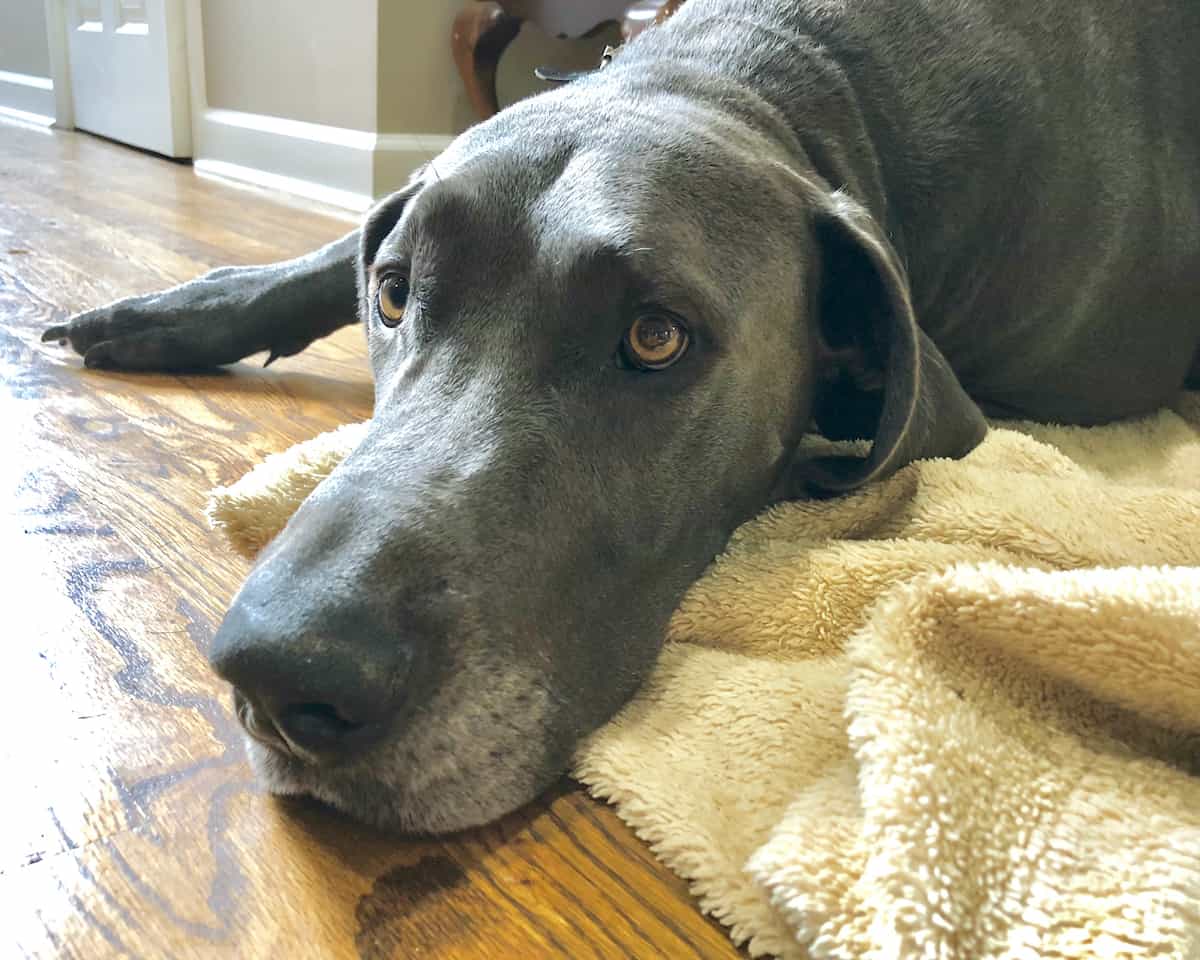
There are a variety of eye problems that can occur in Great Danes. This article explores some of the common eye problems, reviews their symptoms, and teaches about effective treatments to ensure your gentle giant maintains optimal eye health throughout their life.
It is important to watch your Great Dane for any signs of trouble with their eyes and get them to the vet right away. Most eye problems can quickly become a disaster if not treated properly.
Table of Contents
Home Eye Care for Great Danes
At home, there are a few things that you can do to help keep your Great Dane’s eyes healthy.
- Daily Cleaning: Your great day may get eye discharge that has built up in the corners of their eyes. Using saline that you get at the pharmacy, usually with all the contact cleaners.
- Allergy Eyedrops: You can use allergy eye drops if your dog has red eyes due to allergies. The active ingredient that works best for dogs with eye allergies is Naphazoline.
- Eye Supplements: Ocu-Glo is an eye supplement that may help extend your dog’s vision and decrease the development of cataracts. This is a very debated topic among veterinary ophthalmologists, but most believe that it does help.
Redness relief eye drops relieve redness from minor irritations and protect against further irritations.
Ocu-GLO Gelcaps contain seventeen key ingredients, including powerful antioxidants, to help support canine eyesight daily.
While these short and simple approaches can help to ensure your Great Dane’s eye health, the most important thing is to keep a watch out for the potential eye-related problems that could develop which I’ll cover now.
Common causes of eye problems in your Great Dane
- Corneal Ulcer
- Cherry Eye
- Dry Eye
- Pink Eye
- Glaucoma
- Cataracts
- Ectropion and Entropion
If you notice any problems with your Great Dane’s eyes, it is best for them to see your vet right away!
Corneal Ulcer

This is probably the most common eye problem seen across all dog breeds.
A corneal ulcer will develop when something damages the surface of your Great Dane’s eye. This will cause a sore or ulcer on the surface of your dog’s eye. Corneal ulcers can get so big that they can even cause the eyeball to rupture.
If you notice a bluish-grey spot on the surface of your Great Dane’s eye, it would be best to take your Great Dane to your vet. Your vet will stain your dog’s eye with a special stain to see the ulcer.
If your dog does have an ulcer, they will need eye antibiotics and other eye medications to help this ulcer heal. Your dog may also need pain medication as a corneal ulcer is very painful.
Blepharospasm

If your Great Dane has a corneal ulcer, they may have a condition called Blepharospasm. Blepharospasm is when your Great Dane’s eyes will blink very quickly. This is due to involuntary muscle contractions in your Great Dane’s eye.
You will notice that your Great Dane’s eyelid will also appear red, swollen, closed, or irritated. You also may see your Great Dane rubbing their eye with their paw.
This may even cause more trauma or irritation to your Great Dane’s eye.
Many times, this can be due to irritation in your Great Dane’s eye. The most common cause of Blepharospasm is entropion, allergies, and infection.
There are other things, like environmental issues, such as tobacco smoke, or pollen, that can also cause Blepharospasm.
Cherry Eye
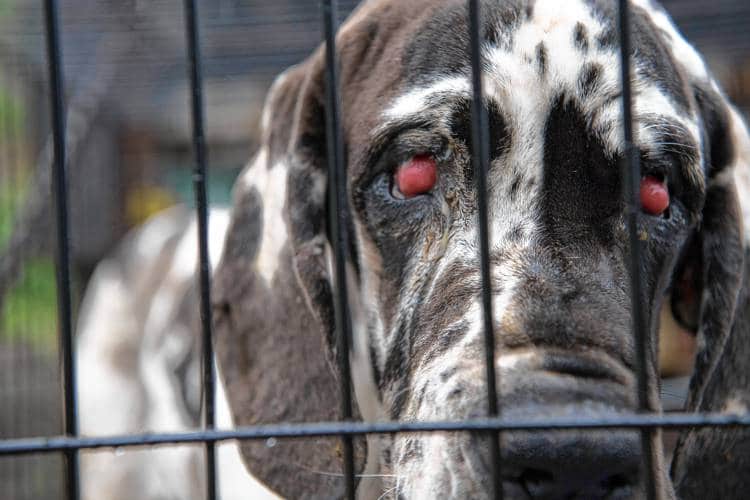
A cherry eye is a term most people use for a swollen 3rd eyelid gland.
This gland in your Great Dane’s third eyelid will become swollen red, looking like a large cherry, in the corner of their eye, thus giving it the name cherry eye.
While this is a very common genetic abnormality seen in bulldogs or other smashed-faced dogs, it can also be seen in Great Danes. This condition usually requires our dog to have surgery to fix the cherry eye.
Rarely does this condition just correct itself on its own.
For more information about cherry eye and its treatments, make sure to take a look at our dedicated article on the topic here.
Keratoconjunctivitis Sicca KCS or (Dry Eye)
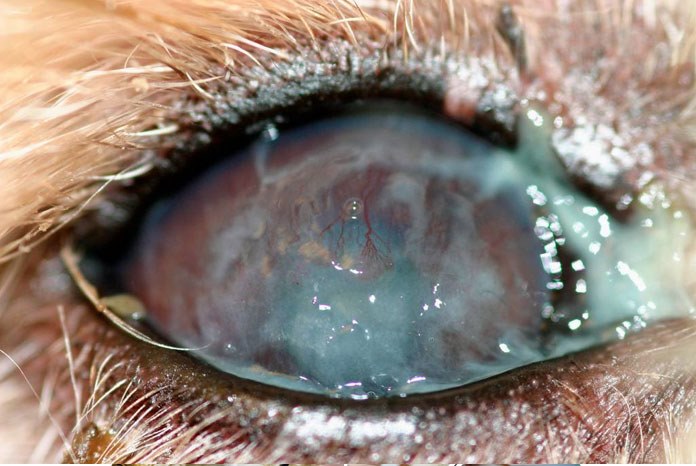
Keratoconjunctivitis Sicca is caused when your Great Dane’s eye does not produce enough tears. This defect in your Great Dane’s tear duct can lead to severe drying of your Great Dane’s eye.
One of the first signs that you will notice is a very thick green mucus on the surface of your Great Dane’s eye, and the white part of the eye will be very red. Many of our smaller dogs will end up with dry eyes, but it can also be seen in Great Danes.
If your vet thinks that your Great Dane has dry eye, they will want to perform a Schirmer test. This will help determine the number of tears that your Great Dane eye is producing.
If they are not making enough, your vet will start your Great Dane on eye drops to help increase tear production.
Conjunctivitis (Pink Eye)
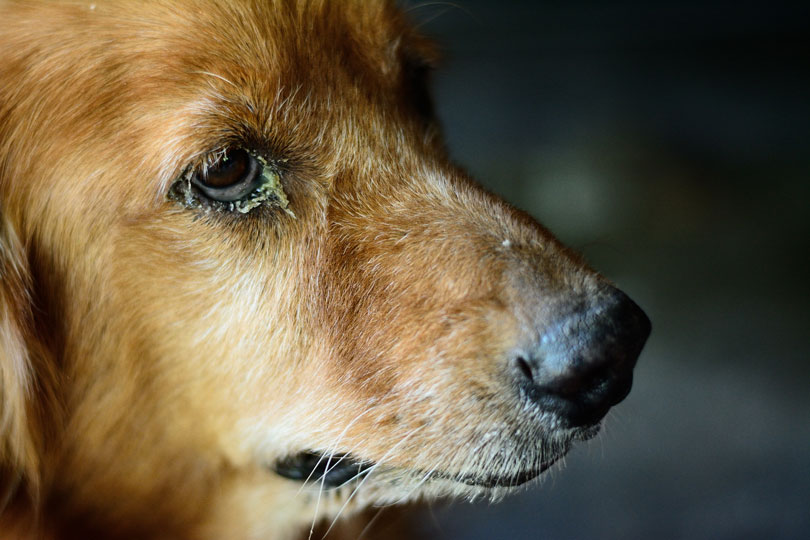
Conjunctivitis is the medical term for pink eye and is an inflammation of the conjunctiva, the tissue that is around the eye. This area will get very red and inflamed and can cause an infection.
The most common causes for this are an ingrown eyelash, allergies, and viral or bacterial infection.
You can use a saline wash to clean the eye, but this rarely solves the problem. Many times, your Great Dane will need to be on medicated eye drops.
It is always best to make sure that you wash your hands when putting drops into your dog’s eye as pink eye can be very contagious from one animal to another and even to people.
Glaucoma
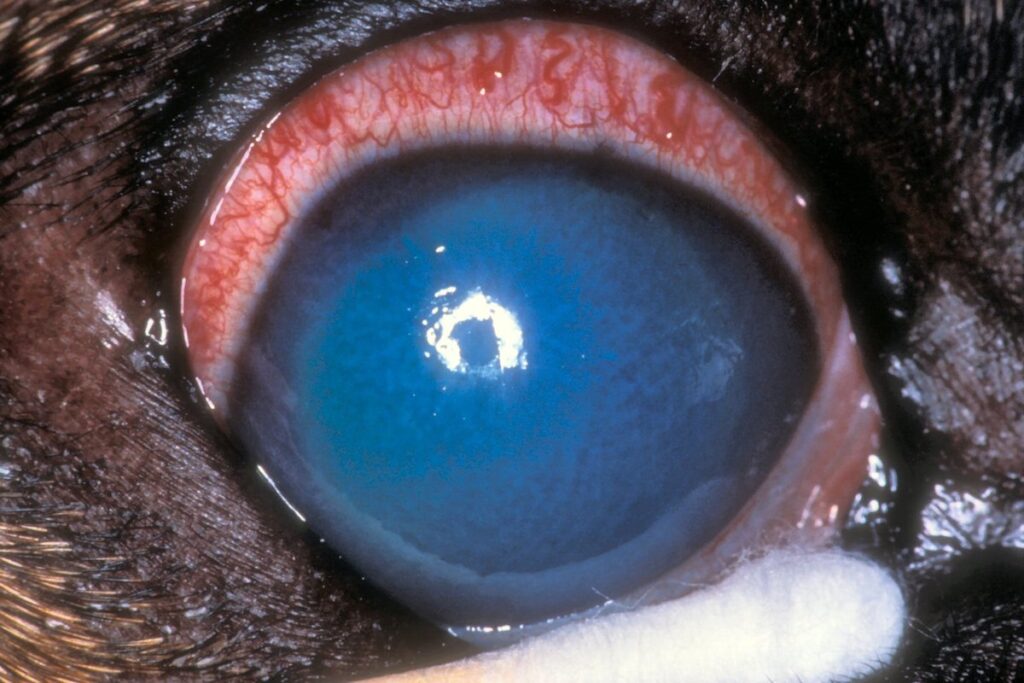
Glaucoma is when the pressure in your Great Dane’s eye has increased. This can be due to an increase in fluid production in their eye or a decrease in fluid draining from their eye.
Your Great Dane’s eye will look very swollen and can be very painful. Many times, your vet can take the pressure off your Great Dane’s eye and get them started on eye drops every day to help decrease the pressure in their eyes.
There are very few times when glaucoma cannot be controlled just by giving them an eye drop. There are other things that you can do to help with the pain in the eye.
If your Great Dane’s eye seems swollen, it is best for you to take them to the vet right away. By delaying the treatment of your Great Dane’s glaucoma, they could become blind.
Cataracts

Cataracts in Great Danes are just as they are in people. Cataracts are when the lenses of the eye become calcified and start to become cloudy.
When you look into your Great Dane’s eye, you will notice a milky white color. This is a cataract.
The cloudiness of the lenses will prevent your Great Dane from being able to see. Cataracts can cause your Great Dane to have very limited vision and can even cause them to go blind.
Unfortunately, the only way to correct cataracts in your Great Dane is with cataract surgery. This would be a procedure that would have to be done by a veterinary ophthalmologist, which can be very expensive.
Cataracts usually develop due to old age or genetics. They can even be caused by certain diseases such as diabetes.
Final Thoughts on Eye Health for Great Danes
Eye problems can happen in your Great Dane. If you notice that your Great Dane has any issues with their eye, it would be best for them to see your vet.
The earlier you catch an eye problem, the easier it is to treat and save your Great Dane’s vision!
With most eye problems, they can get bad very quickly. Monitor your dog’s eye for any changes and seek veterinary care as soon as you notice something wrong.

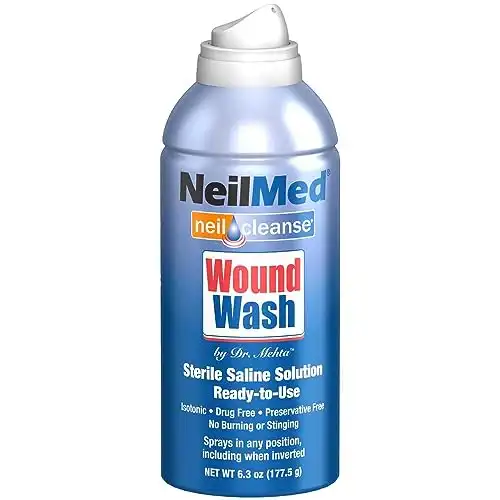

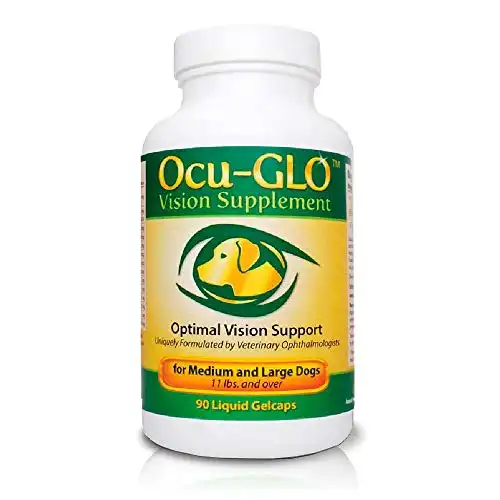
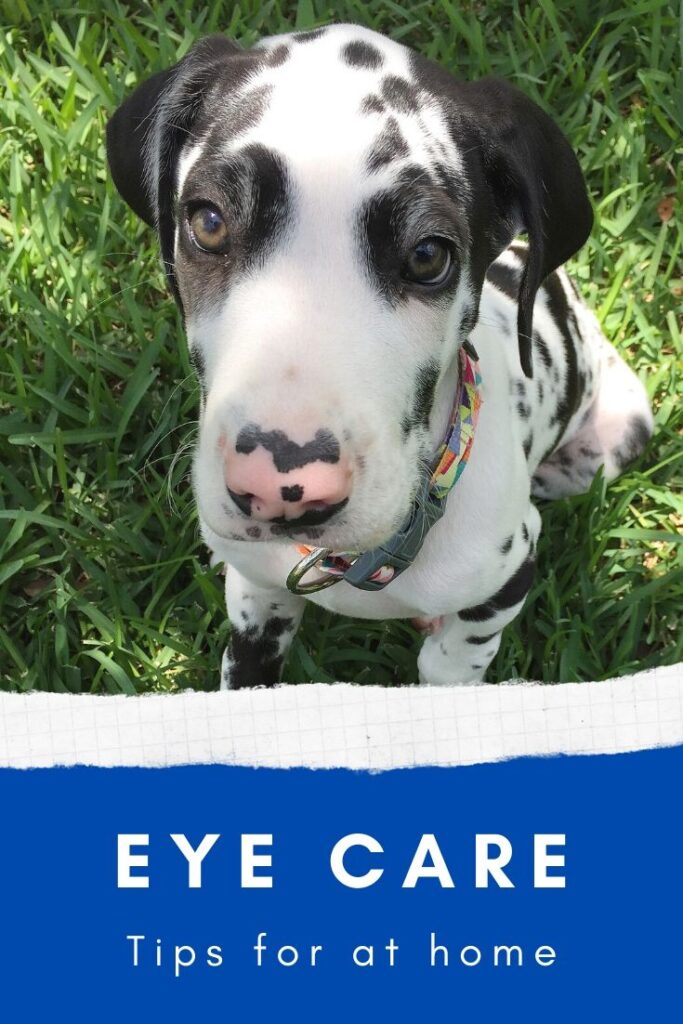
I was wondering if any one has a great dane where the eye lid covers half of the lower part of the actual eye and is there another option besides surgery
Hi, my 3 yr old GD adopted from granddaughter in another state… Has similar problem with one eye. The bottom inner red lid has a v like damage early in life, always red and draining. Lid tends to get redder when she’s outdoors like allergies.
Treating her with MSM spray, I used this myself for floaters and no longer need reading glasses. I’m 67yrs old. I’ll post if I see it helps her.